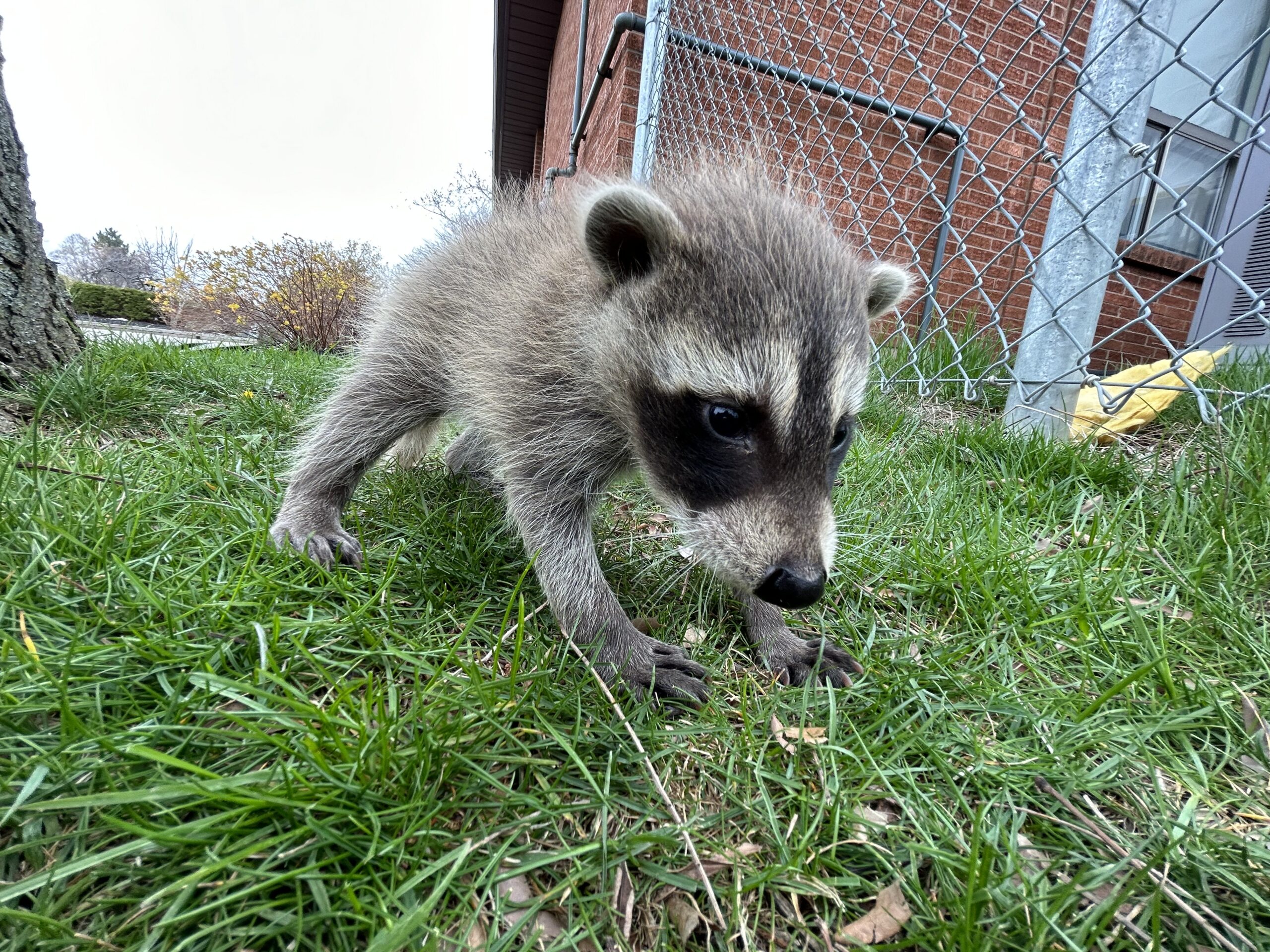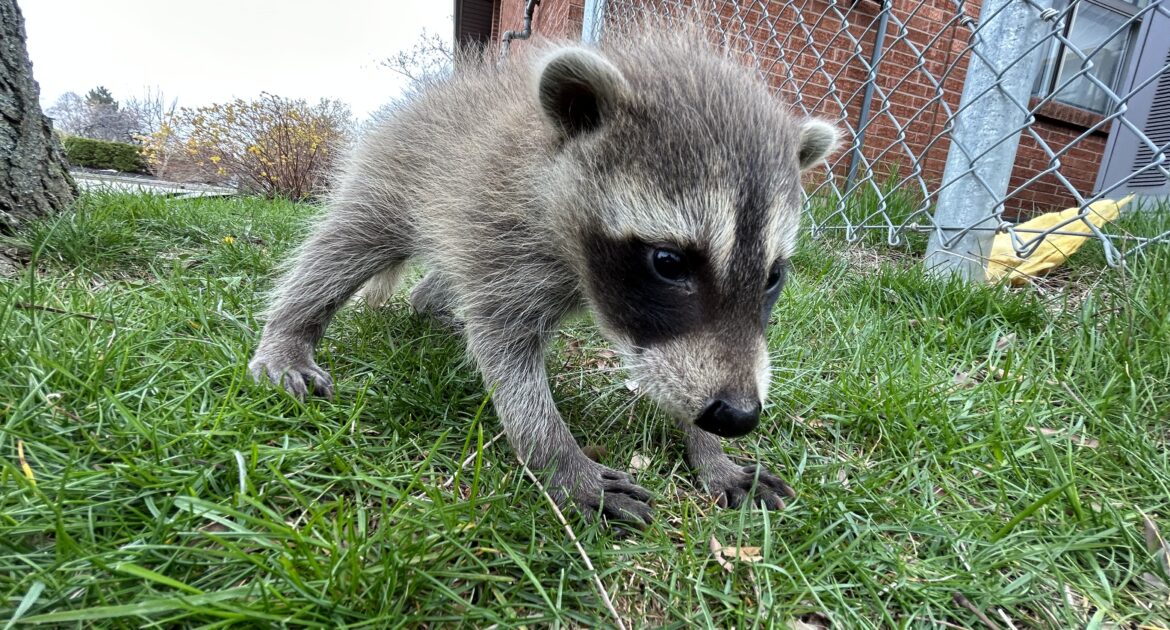Sometimes, a simple TV show can change how people see animals. That’s what happened in Japan in the 1970s when the anime Rascal the Raccoon became a hit. This sweet show about a boy and his pet raccoon made people fall in love with these animals. But this love for anime-inspired pet raccoons turned into a big problem. The “Japanese anime raccoon craze” led to thousands of these animals being brought to Japan, creating trouble for homeowners and harming the environment.
If you live in Guelph, we can learn valuable lessons from this story. Keep reading to find out how this entertaining show caused an invasion, why raccoons make bad pets, and how you can protect your home. At Skedaddle Humane Wildlife Control, we know how to handle raccoon issues safely and effectively.
How “Rascal the Raccoon” Caused a Big Problem in Japan
The tale starts in 1963 with an American book, Rascal: A Memoir of a Better Era, written by Sterling North. The story follows a young boy caring for an adorable baby raccoon named Rascal, painting a picture of companionship with the wild animal. The book’s popularity led to a live-action Disney movie, but it was Japan’s 1977 anime adaptation, Rascal the Raccoon, that changed everything.
This 52-episode series transformed Rascal into a national icon, and viewers couldn’t get enough of his striped tail and playful demeanour. Raccoons weren’t native to Japan, but love for the character sent people scrambling to bring real-life raccoons into their homes. At its peak, 1,500 raccoons per month were being imported from the United States. Unfortunately, the magic of the show left out an important fact: raccoons do not make good pets.
Once people discovered how difficult it was to care for raccoons, they started letting them go into the wild. But by then, it was too late. The fuzzy creatures adapted fast and spread across Japan, displacing native animals like the tanuki (or raccoon dog), destroying crops, and even damaging centuries-old temples. With no natural predators, raccoons multiplied rapidly, leaving the government scrambling to find solutions. You can learn more about the extraordinary chain of events here.
Raccoon Pet Trend Dangers
The raccoon pet trend brought about by this anime isn’t just bad for the environment; it’s also a terrible idea for families. Raccoons may look cute, but they’re wild animals with instincts that make them tough to manage in homes.
Here’s why raccoons are unsuitable as pets and the dangers they pose:
- Behavioural Issues: At first, baby raccoons might seem friendly and fun to have around. But as they grow, their wild instincts take over, making them hard to control. They are naturally curious, and that curiosity often leads to chewing through wires, scratching furniture, and even overturning household items. Raccoons don’t understand boundaries like pets do, and their behaviour can quickly create chaos in your home.
- Health Risks: Raccoons may carry dangerous diseases that can spread to people and pets. Rabies is one of the most serious dangers because it can be life-threatening without treatment. Another common risk is roundworm, which spreads through raccoon droppings and can cause severe health problems if it’s accidentally ingested. These health threats make raccoons unsafe to handle, especially for kids and house pets.
- Environmental Consequences: When pet raccoons are released into the wild, they often outcompete native animals for food and shelter. Without natural predators, their populations grow quickly, throwing the local ecosystem off balance. They can destroy habitats and push out species that are vital to the environment. This disruption can harm plants, animals, and even people who rely on healthy natural systems in their area.
We’ve seen in Guelph how human interference with wildlife can spiral into big problems. That’s why Skedaddle Humane Wildlife Control focuses on strategies that handle wildlife humanely while keeping people and homes safe.
What Happened to Released Raccoons in Japan
Japan is still struggling today with the effects of the Japanese anime raccoon craze. Raccoons have spread to 44 of the 47 prefectures, wreaking havoc on homes, farms, and important cultural sites like wooden temples.
Authorities have tried to control raccoon populations, but the animals adapt quickly. They continue to damage property and push out native animals like the tanuki, also known as the raccoon dog. These challenges remind us how much harm can come from letting wild animals loose in areas where they don’t belong.
Closer to home, raccoons can also cause damage if they invade your property. Whether it’s broken vents, chewed wires, or messy attics, a raccoon can make a big impact. That’s why it’s important to avoid risky practices like live trapping or relocation, which often make the problem worse.
Tips to Keep Raccoons Away from Your Home
We can avoid the mistakes made in Japan by taking steps to keep raccoons from becoming pests. Here are some easy tips from our experts at Skedaddle Humane Wildlife Control:
- Secure Garbage Bins: Always close your garbage bins tightly to keep raccoons out. They’re smart enough to open weak lids, so consider animal-resistant bins for extra protection.
- Block Entry Points: Check your house for small gaps or openings, like around vents, chimneys, and soffits. Even holes the size of a quarter can become a raccoon’s door. Seal these spaces to prevent them from getting inside.
- Remove Attractions: Raccoons are always looking for food or shelter. Trim tree branches near your roofline and remove yard debris to make your yard less appealing. Never leave pet food outside where raccoons can find it.
- Call a Professional: If a raccoon has already moved into your home, don’t try to handle it on your own. DIY methods can fail and even make the problem worse. Trust professionals like us at Skedaddle. We use one-way doors that allow the raccoon to leave without letting it come back.
These simple steps can help you stop raccoons before they cause trouble.
Why Choose Skedaddle to Handle Wildlife?
Skedaddle Humane Wildlife Control is here to help in Guelph if raccoons get too close to your home. Our humane approach keeps people and animals safe. We use smart solutions, like our one-way doors, to remove raccoons without harming them. The doors allow raccoons to find their way out but block them from coming back inside. This way, your home stays protected in a way that works with nature. We’re proud to help homeowners feel secure, even when wildlife decides to move in unexpectedly.
Protect Your Home from Anime-Inspired Pet Raccoons
The story behind anime-inspired pet raccoons shows what can go wrong when wild animals become pets. The “Japanese anime raccoon craze” led to widespread damage and risks that could have been avoided. Wildlife belongs in nature, not homes.
If a raccoon becomes a problem on your property, don’t handle it yourself. Trust Skedaddle Humane Wildlife Control in Guelph to take care of it. Request an estimate today to learn more about our humane wildlife solutions. Together, we can protect your home and keep wildlife safe where it belongs.




